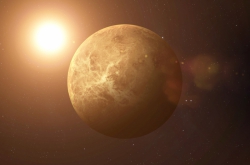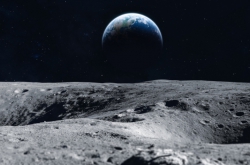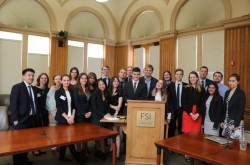Space dumpster
ESA and NASA have long published a video that shows the increase in debris from artificial satellites and their remains on the Earth's orbit for the past half-century. On the video, it seems that the planet is literally surrounded by it, yet, one must note that different parts of space debris have different size. This means that the real picture is different from the computer simulation.
According to official data from NASA, there are more than 20,000 units of space debris of around 10 cm in size on the Earth's orbit. According to ESA, there are also about 600,000 units of debris of about 1 cm in size. Counting the debris that is smaller seems to be impossible. As of now, only 23,000 units of debris are monitored.
Where does it come from?
During more than fifty years of the "satellite's history", there were more than 5,5 thousand space missions that had to do with the planet's orbit. This means that it's full of used submissles and old satellites. What's more, in space, like on Earth, accidents happen as well. Satellites blow up and collide. The first collision happened in 1996, when Arian-1's submissle collided with the Cerise satellite. A more famous event was the collision of the American Iridium communication satellite and Russian military satellite Kosmos-2251 which happened in 2009. Then, more than 2000 parts of debris bigger than 10 cm spread around the orbit.
 Credit: geektimes.ru
Credit: geektimes.ru
A great number of debris — more than 3,000 units — was released after China tested their anti-satellite missile. In 2007, they shot it at their own satellite. This caused a negative reaction from many countries, not only because of increase in space debris, but also because China attempted to "militarize" space.
What's the danger of space debris?
It may seem that space debris is nothing scary: some bits of metal or plastic are wandering the orbit. Yet, these "bits" fly at about 10 kilometers per second. Any collision with them can cause serious damage to active satellites, and this may cost billions of dollars. This threatens satellites and rockets, and may hinder space research and exploration as whole.
As of now, different projects on eliminating space debris are being developed. There is an idea to "catch" debris and burn it in the atmosphere, as well the one to burn them with a powerful laser beam. Yet, before any of them are put to practice, it is important to avoid any collisions of space debris with active satellites. The debris's orbits constantly change, that is why it’s most important to monitor the debris's trajectories.
Roscosmos will monitor the debris from Brazil
Roscosmos began installing the new telescope at the Pico dos Dias Observatory in Brazil last year. Similar set-ups have already been set up in different places around Russia, yet to increase Russia's capability in monitoring space debris, they are needed abroad, as well. This will allow to timely predict collisions of satellites and space debris, and change their trajectory.
 Telescope for monitoring space debris. Credit: personal archive
Telescope for monitoring space debris. Credit: personal archive
Russia's optical-electronic set-up for detecting and analyzing the movement of space debris in Brazil is a high-technology project which united specialists in both engineering and software design. ITMO's staff members developed the systems of high-precision electric drives for operating the telescope.
 ITMO's invention
ITMO's invention
The set-up has to define the debris's trajectory with extremely high precision. To do that, the telescope's object glass uses a set of lens; it also needs to follow the debris's movement along its guiding axles.
"The axles had to be fixed with high-precision electric drive systems. The trajectory of the object lens movement has to precisely follow the trajectory of a space object that is in tens of thousands kilometers away. Such systems imply moving at infra-slow speed, while the set-up weighs several tons and has to turn with great precision. All this implies using extra fine sensors, and vast computational capacities for the software", comments Konstantin Denisov, deputy chief designer of the digital electric power drive, Assistant Professor at the Department of Electrical Engineering and Precision Electromechanical Systems, the project's member.
 The project's participants
The project's participants
The change of trajectories is done in accordance with information from the central computer or special equipment. Thus, the telescope's optical axis overlays with the sighting line of the object.
Apart from Brazil, Roscosmos plans to install its set-ups for monitoring space debris in RSA and other countries with appropriate climate conditions — transparent air and clear skies.
We'd like to add that among those working on the set-up's installation in Brazil were ITMO's staff members Valentin Tomasov, Andrei Gurianov, Ivan Jdanov and Sergei Lovlin.





